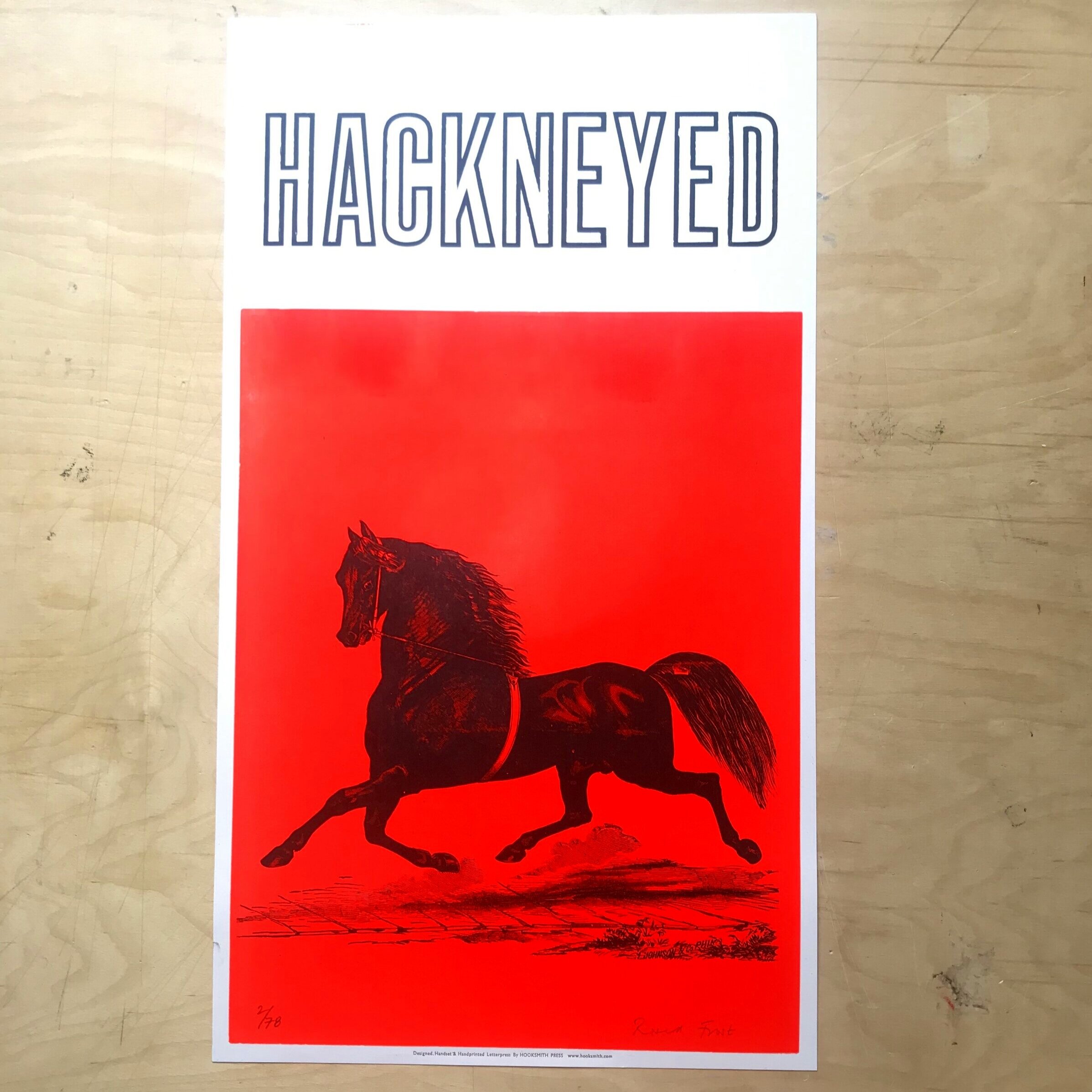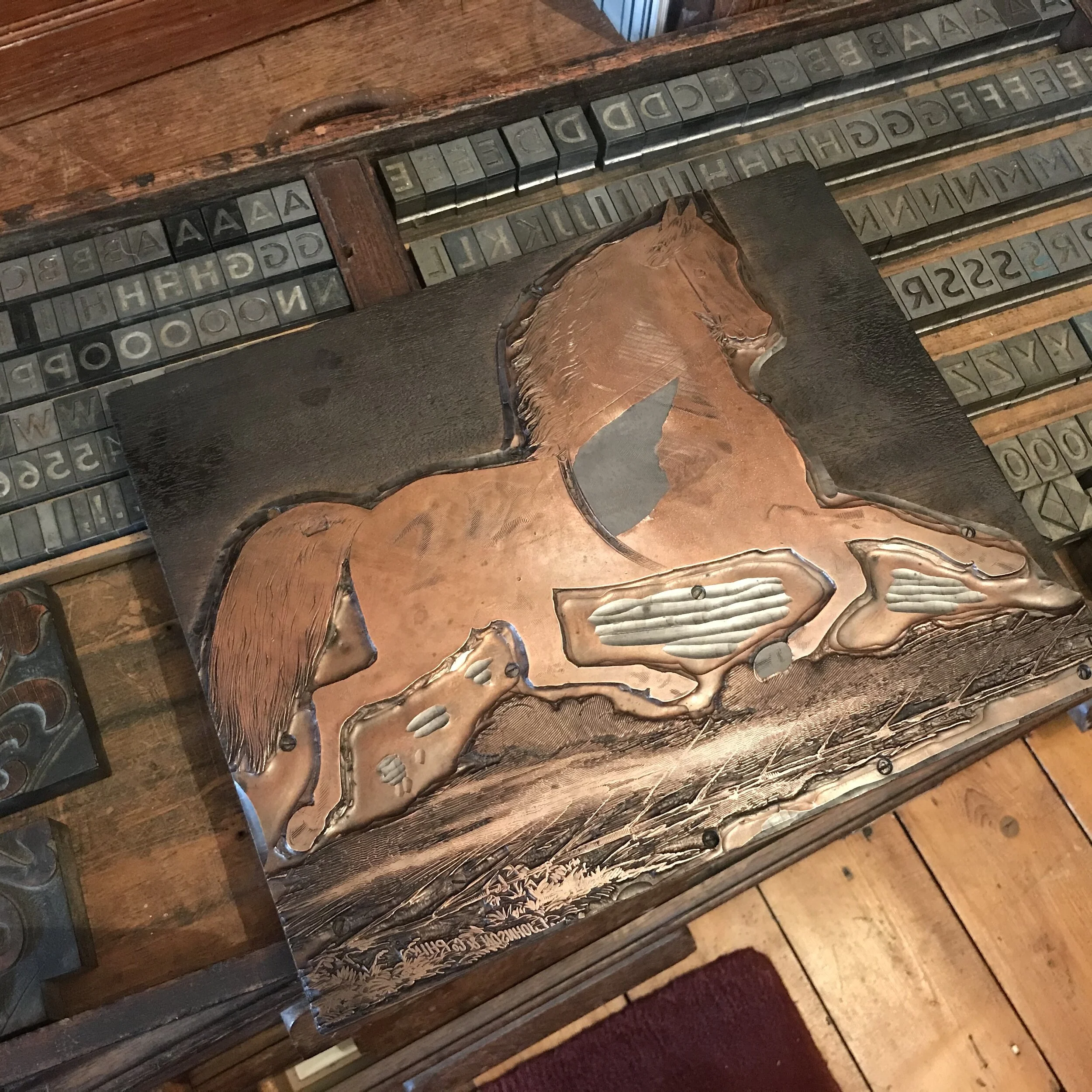- Shop
- Hackneyed
Hackneyed






Hackneyed
370X650mm 270gsm, Recycled Paper Stock, Vansons Rubber Ink, Limited Edition of 78
Royal Academy of Art - Summer Exhibition 2022 ‘Hackneyed’ Print selected for inclusion in exhibition. Curated by Grayson Perry RA.
A big and bold print, hand printed on a Vandercook SP!5, using a large, highly detailed antique-engraving of a horse. Accompanied with outlined wooden poster type (maker unknown), over a bright almost neon orange-red colour blocking.
The engraved plate was manufactured by a type foundry; L.Johnson& Co Philadelphia, USA, and dates to between 1840-1867. initially it was thought that the signature in the bottom right of the engraving was a saddlers.
The place name Hackney, comes from the name ‘Hakney or Hackeneye’ and is thought to be named after a prominent person from the locality, named Haca/Haka, with the ‘ey’, being old English for ‘small-island’ in the River Lea, circa 13th C. (source wikipedia…)
Fast forward to 1600’s and you get Hackney Coaches and later Hackney Carriages, named after the then Village. These were the forerunner to the Black Cab, or Hackney of today. The word, hackneyed also means worn-out and there is a bit of fun there!. The print block of the horse, with which the prints were made, certainly is, with the fine electroplate copper parting company with the lead beneath.
A Hackney horse is a small, high-stepping horse and gives rise to the french word haquenée, a term used for a small breed of horse
Recent tracing of my family tree reveals that my Great Grandfather, Albert Edward Smith, was a Hackney Carriages Driver, born in Bethnal Green.
370X650mm 270gsm, Recycled Paper Stock, Vansons Rubber Ink, Limited Edition of 78
Royal Academy of Art - Summer Exhibition 2022 ‘Hackneyed’ Print selected for inclusion in exhibition. Curated by Grayson Perry RA.
A big and bold print, hand printed on a Vandercook SP!5, using a large, highly detailed antique-engraving of a horse. Accompanied with outlined wooden poster type (maker unknown), over a bright almost neon orange-red colour blocking.
The engraved plate was manufactured by a type foundry; L.Johnson& Co Philadelphia, USA, and dates to between 1840-1867. initially it was thought that the signature in the bottom right of the engraving was a saddlers.
The place name Hackney, comes from the name ‘Hakney or Hackeneye’ and is thought to be named after a prominent person from the locality, named Haca/Haka, with the ‘ey’, being old English for ‘small-island’ in the River Lea, circa 13th C. (source wikipedia…)
Fast forward to 1600’s and you get Hackney Coaches and later Hackney Carriages, named after the then Village. These were the forerunner to the Black Cab, or Hackney of today. The word, hackneyed also means worn-out and there is a bit of fun there!. The print block of the horse, with which the prints were made, certainly is, with the fine electroplate copper parting company with the lead beneath.
A Hackney horse is a small, high-stepping horse and gives rise to the french word haquenée, a term used for a small breed of horse
Recent tracing of my family tree reveals that my Great Grandfather, Albert Edward Smith, was a Hackney Carriages Driver, born in Bethnal Green.
